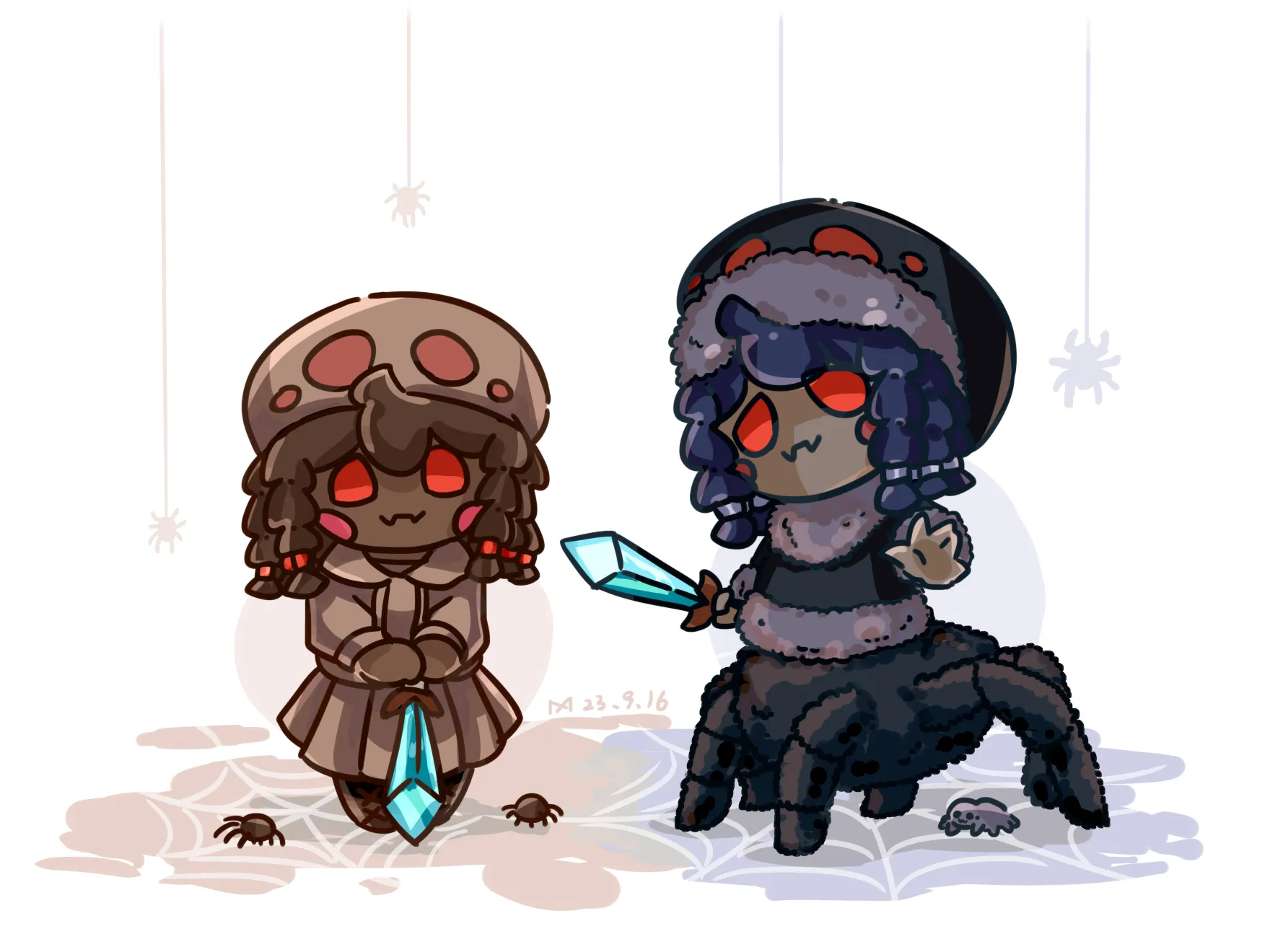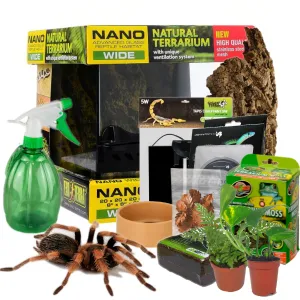Choosing the Right Enclosure
Setting up a tarantula minion habitat is the first step towards providing a safe and thriving environment for your new pet. The right enclosure is crucial, as it directly impacts your tarantula’s health, behavior, and overall well-being. Consider the species of tarantula you have, as terrestrial, arboreal, and fossorial species have different needs. A well-chosen enclosure will be secure, easy to clean, and provide the necessary conditions for your tarantula minion to thrive. Prioritizing the correct enclosure ensures the longevity and happiness of your tarantula minion, making it a rewarding experience for both you and your eight-legged friend. Remember, a happy tarantula is a healthy tarantula, and the right setup is the foundation of their happiness.
Enclosure Size and Material
The size of the enclosure should be proportional to the tarantula’s size. A general rule of thumb is to provide an enclosure that is at least twice the tarantula’s leg span in width and length. For terrestrial species, the width and length are more important than height, while arboreal species will benefit from a taller enclosure. The material of the enclosure should be durable, transparent, and provide good ventilation. Glass or clear acrylic enclosures are ideal as they offer a clear view of your tarantula minion and are easy to clean. Avoid using materials that can be easily chewed through or that might contain harmful chemicals. Ensure the enclosure has a secure lid to prevent escapes. A well-sized and properly made enclosure is a fundamental aspect of tarantula minion setup, helping you to provide a safe and enriching environment.
Ventilation Requirements

Adequate ventilation is essential for maintaining a healthy environment in your tarantula minion’s enclosure. Proper airflow prevents the buildup of harmful mold and bacteria, while also regulating humidity levels. The enclosure should have cross-ventilation, meaning vents on opposite sides of the enclosure, to ensure sufficient air exchange. Avoid enclosures with poor ventilation, as this can lead to respiratory problems for your tarantula. The ventilation system should be designed to allow for airflow without compromising the security of the enclosure. Fine mesh vents, or strategically placed holes, are typically sufficient. Regular monitoring of the enclosure’s humidity levels, coupled with appropriate ventilation, is critical for the health and longevity of your tarantula minion. Poor ventilation can lead to a variety of problems, so it’s an important consideration for effective tarantula minion setup.
Substrate Selection for Tarantula Minions
The substrate serves multiple purposes in a tarantula minion’s enclosure, including providing a comfortable surface to walk on, aiding in burrowing (for burrowing species), and helping to regulate humidity. The choice of substrate is therefore crucial for your tarantula’s well-being. It should be non-toxic, retain moisture well, and be free of pesticides or other harmful chemicals. The ideal substrate should also be easy to clean and replace. The right substrate is an essential component of the tarantula minion setup and should be selected based on the species and its natural habitat. A good substrate supports the environmental needs of your tarantula, which promotes their natural behaviors. The well-being of your tarantula is heavily influenced by the type of substrate used within their habitat.
Best Substrate Options
There are several suitable substrate options for tarantula minions, each with its own benefits. Coconut fiber (coir) is a popular choice due to its excellent moisture-retaining properties and natural look. Sphagnum moss can be used to help increase humidity in specific areas of the enclosure, and it also provides an attractive look. Peat moss is another option, known for its moisture retention and ability to support burrowing. Avoid substrates like cedar or pine shavings, as the oils in these woods can be harmful to tarantulas. A mix of substrate can sometimes be beneficial, combining the advantages of different materials. Always choose a substrate that is specifically designed for reptiles or invertebrates, ensuring it is safe and free of chemicals. The ideal choice will depend on the type of tarantula and its natural habitat. This is a critical aspect of setting up a tarantula minion habitat.
Substrate Depth and Maintenance

The depth of the substrate should be appropriate for the tarantula species. Terrestrial species generally benefit from deeper substrate for burrowing, while arboreal species may require less. As a general guideline, provide a substrate depth of at least 2-6 inches for terrestrial species. Regularly monitor the substrate for cleanliness and moisture levels. Spot clean the substrate as needed, removing any uneaten food or waste. The substrate should be replaced entirely every few months, or more frequently if necessary, to prevent the buildup of mold or bacteria. Maintaining the substrate is an ongoing task, vital to maintaining a healthy habitat. Proper substrate maintenance is key to a healthy tarantula minion setup. Regularly caring for the substrate ensures a clean, safe environment for your pet.
Creating a Comfortable Environment
Creating a comfortable environment is key to the health and happiness of your tarantula minion. This involves controlling temperature, humidity, and providing suitable hiding places and décor. Mimicking the tarantula’s natural habitat is the primary goal, as it helps reduce stress and promotes natural behaviors. This not only benefits their physical health but also enhances their mental well-being. A well-designed enclosure that offers comfort and security plays a major part in ensuring your tarantula minion lives a long and healthy life. Attention to environmental details will greatly enhance your experience as a tarantula minion owner and offer a enriching experience for your pet.
Temperature and Humidity Control
Maintaining the correct temperature and humidity levels is essential for the survival of your tarantula minion. Research the specific temperature and humidity requirements for the species you have. A good thermometer and hygrometer are crucial tools for monitoring these conditions. A heating pad, placed on the side or back of the enclosure (never the bottom), can provide a gentle heat source. Avoid direct sunlight, as this can overheat the enclosure. To maintain humidity, mist the enclosure with dechlorinated water regularly, or provide a water dish. Adjust the frequency of misting based on the species’ needs and the ambient humidity of your environment. Proper temperature and humidity are fundamental for the overall health of your tarantula. Use these environmental tools as a core element of your tarantula minion setup.
Importance of Hiding Places and Decor

Tarantulas are naturally reclusive creatures, so providing hiding places is a must. Cork bark, half logs, or commercially available hides offer safe and secure retreats for your tarantula minion. These hides not only provide security but also help reduce stress, especially during molting. Decorate the enclosure with plants (live or artificial) to create a more natural environment. Ensure any decorations are non-toxic and secure, as tarantulas can sometimes rearrange their environment. A well-decorated enclosure encourages your tarantula to exhibit its natural behaviors and adds visual interest. Hiding places and appropriate décor are necessary for a happy, healthy tarantula. A well-designed environment has a significant impact on the well-being of your tarantula minion.
Water and Feeding Guidelines
Proper hydration and nutrition are essential components of tarantula minion care. Providing fresh water and a balanced diet ensures your tarantula remains healthy and active. Understanding the specific feeding needs of your tarantula is key to their health and longevity. Adhering to these guidelines will help you create a thriving environment for your tarantula minion. Feeding and hydration play a pivotal role in successful tarantula minion care. This is a key factor for a thriving tarantula minion setup and essential for maintaining your pet’s well-being.
Providing Fresh Water
Always provide a shallow water dish with fresh, clean water for your tarantula minion. The dish should be shallow enough to prevent drowning, especially for smaller tarantulas. Use a non-toxic dish made of plastic or ceramic. Replace the water every few days, or more frequently if it becomes soiled. Ensure the water dish is securely placed to avoid spills. For smaller spiderlings, you can provide water by misting the enclosure, or using a cotton ball soaked in water. Regular access to fresh water is crucial for hydration and overall health. Providing a clean water source is a basic requirement for tarantula minion setup and an essential part of the daily care routine.
Feeding Your Tarantula Minion

Tarantulas are carnivorous and primarily eat live insects. The size of the prey should be appropriate for the size of your tarantula. Crickets, mealworms, and roaches are common food items. Avoid feeding your tarantula insects that have been exposed to pesticides. Feed juvenile tarantulas 2-3 times a week, and adults once a week or every other week. Remove any uneaten food within 24 hours to prevent mold and mites. Overfeeding can lead to health problems, so regulate the feeding schedule based on the tarantula’s appetite. Always provide a varied diet to ensure your tarantula minion receives all the necessary nutrients. Monitoring your tarantula’s feeding habits is a good indicator of its overall health. A good feeding strategy is a vital element for the welfare of your tarantula minion.
Essential Equipment and Supplies
Before you bring home your tarantula minion, gather the necessary equipment and supplies to create a proper habitat. Having the right tools and resources will make the setup process easier and ensure you can provide the best possible care for your pet. From basic tools to specialized items, being prepared ahead of time ensures a smooth transition and a comfortable living space for your tarantula. Proper preparation is key for a successful tarantula minion setup and will contribute to your pet’s long-term well-being. The proper equipment streamlines the process and gives you the tools to succeed as a tarantula minion owner.
Tools for Setup and Maintenance
Essential tools include a small container for holding insects, feeding tongs to avoid getting bitten, a water sprayer for misting, a thermometer and hygrometer to monitor temperature and humidity, and a substrate scoop. Also, consider using a small paintbrush for cleaning the enclosure, and a secure container for transporting the tarantula, if necessary. Always use clean tools to prevent contamination of the enclosure. Having the right tools simplifies the maintenance and cleaning processes, making it easier to provide the best care. The correct tools will provide you with the ability to create and maintain a healthy and enjoyable environment for your tarantula minion. Good tools ensure your success with your tarantula minion setup.
Safety Precautions for Handling

While tarantulas are generally not aggressive, handling them should be minimized, and done with caution. Tarantulas can bite, and some species have urticating hairs that can cause skin irritation. Always wash your hands before and after handling the tarantula or its enclosure. Avoid sudden movements and be mindful of the tarantula’s behavior. If you need to move your tarantula, use a wide-mouthed container and gently coax it in. Never handle a tarantula when it’s about to molt, as they are more vulnerable during this time. Safety first is always the best policy. Handling should be done only when absolutely necessary, and with extreme care. Handling your tarantula minion requires knowledge and a calm demeanor.
